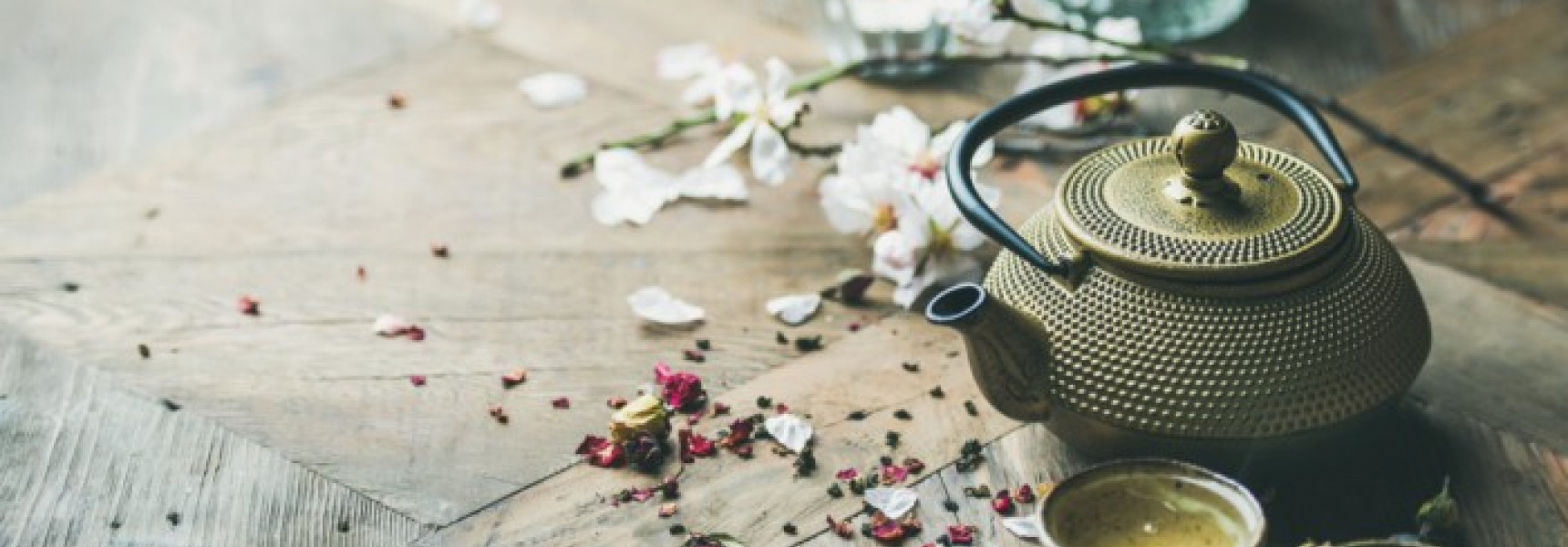Food Experiences
Tokyo
Published: 22 Jun 2022
There are many inspiring ceremonies and practices based around food and drink the world over. Our relationship with food and dining experiences change based on location, history, and our lifestyles. A practice that seeks to help those who carry it out to find peace in the hoi polloi of daily life is the Japanese tea ceremony. This delicate traditional ceremony is fascinating whether you are of Japanese ancestry, love the country, or just want some insight into the culture.
But what is a Japanese tea ceremony? What does it symbolise, and how can you partake in this long-lasting tradition? Read on to discover more, and find out if the Japanese tea ceremony is for you.

What is the Japanese tea ceremony used for?
This is the ceremonial way in which Japanese people may prepare and drink their tea. The tea in question is green tea, usually matcha, and the ceremony is often carried out in a classic Japanese tearoom, featuring a tatami floor. The reason for this ceremony is not simply drinking the tea itself, the aim is for guests to take a step away from their fast-paced lives beyond the tearoom, to embrace the hospitality of their host and relax into the welcoming and calming atmosphere. In this way, preparing, serving and drinking tea almost becomes a form of meditation.
What does the Japanese tea ceremony symbolise?
The Japanese tea ceremony is steeped in symbolism far beyond that which you may expect based on the Western way of drinking tea. This ceremony is representative of harmony and tranquillity, as well as respect. One needs to embrace these pillars, as well as the idea of purity, in order to get the most from the ceremony itself.
You may have heard of the “wabi” and “sabi” - these are the ideas behind the meaning of the ceremony. “Wabi” is that which is spiritual in our lives, while “sabi” represents the more material side of life. While “wabi” stands for quiet, refined being, “sabi” means that which has been weathered. Understanding how these combine - that which is imperfect and that which helps you to reach your highest self - is part of the spiritual awakening that was behind the original tea ceremonies.
As you can see, the tea ceremony is a fascinating insight into the way that Japanese culture holds onto these practices and continues to honour their meaning.

The Japanese tea ceremony in history
Throughout Japanese history, the tea ceremony has remained a stalwart of the culture. It was originally rooted in Buddhist practices and was brought into Japan by a 9th-century Buddhist monk who had witnessed a similar undertaking in China. Tea was already a large part of Chinese daily life and was used frequently in religious ceremonies, whereas the Japanese drank tea mainly for medicinal purposes. However, thanks to this 9th-century introduction, soon drinking tea for pleasure and refinement became its own aesthetic and spiritual status symbol, beginning with the warrior class and spreading further afield throughout the century.
What happens during a Japanese tea ceremony?
The tea ceremony is a highly individual practice, which varies widely based on where it is being carried out and what time of year it is. The guests will often wear traditional Japanese clothing, such as the yukata (a light and summery kimono), and will greet the host with a bow of respect. It is usual for the guests to enter into the spirit of purity by washing their hands and rinsing out their mouths with water from a stone basin before taking off their shoes and entering into the tearoom.
The tea ceremony is a highly ordered affair, with guests being seated in order of importance or prestige. Once the ceremony begins properly, there is a meal served over many courses, along with sake. This is only done in full-length tea ceremonies - in less formal ceremonies, guests may only be served tea and some small sweets.
When the meal has been eaten, the host cleans down the area while the guests step outside. A floral arrangement is often set up and the area is cleared for serving tea, with each item being ritually purified before use. When the guests return, they once again clean their hands and mouths, bow, and then the tea is served.
The tea is also served in order of prestige, with the first guest taking a sip from the bowl, before wiping it and passing it along to the next guest. Each guest compliments the host on the tea.
While your tea ceremony may not involve sharing tea from the same bowl, the same thoughtful preparations will be made so you can appreciate a traditional experience.

How long is a Japanese tea ceremony?
You might be surprised at how long a formal tea ceremony is. While those which you might experience as a tourist won’t be this long, the full-length ceremony can last up to four hours. It involves not only two kinds of tea, but a meal as well. It engages every element of the host’s skills and is designed to be a creative and peaceful experience, with strong aesthetic value.
Where can you experience a Japanese tea ceremony?
If you want to experience an authentic Japanese tea ceremony, there will be plenty of opportunities when you visit the country itself.
The Yukata Workshop and Tea Ceremony is a wonderful way to get an intimate and thorough tea ceremony experience. Guided by a nationally licensed tea master in the bustling heart of Tokyo, you will learn how to dress for the ceremony, enjoy a photoshoot by the iconic Tokyo Tower or the beautiful Zojoji Temple, and finally attend the traditional tea ceremony itself. This is such a wonderful way to take in this uniquely Japanese experience.
Food and Drink Experiences in Japan
If you are intrigued by the idea of attending a Japanese tea ceremony, or you want to experience a different kind of food or drink-based adventure altogether, then tabl. has something for you. It is also a unique and incredible gift idea. From amazing experiences all around the world to online cooking classes, browse our full range to find the perfect culinary experience for you or a loved one.






